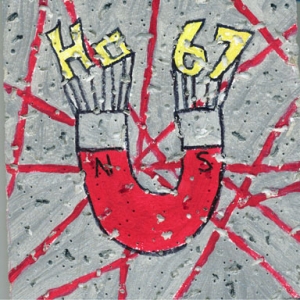
photo retrieved from https://uwaterloo.ca/chemistry/international-year-chemistry/periodic-table-project/holmium
- Holmium is a chemical element with symbol Ho and atomic number 67.
- Holmium is a rare earth element.
- Holmium is a bright, soft, silvery-white, rare earth metal that is both ductile and malleable.
- Holmium does not react in dry air at normal temperatures, but rapidly oxidizes to a yellow oxide (Ho2O3) in moist air or when heated.
- Holmium has unusual magnetic properties, including the highest magnetic moment (10.6 µB) of any naturally occurring element.
- As a result of its special magnetic properties, holmium is used in alloys for the production of magnets and as a flux concentrator for high magnetic fields.
- Holmium is considered to be of low toxicity.
- Holmia (holmium oxide) is used as a yellow or red coloring for glass and cubic zirconia.
- Holmium isotopes are good neutron absorbers and are used in nuclear reactor control rods.
- Holmium is also used in solid-state lasers for non-invasive medical procedures treating cancers and kidney stones.
Posted by Direniş ÇAYLI on December 21, 2016
Comments
Post a Comment